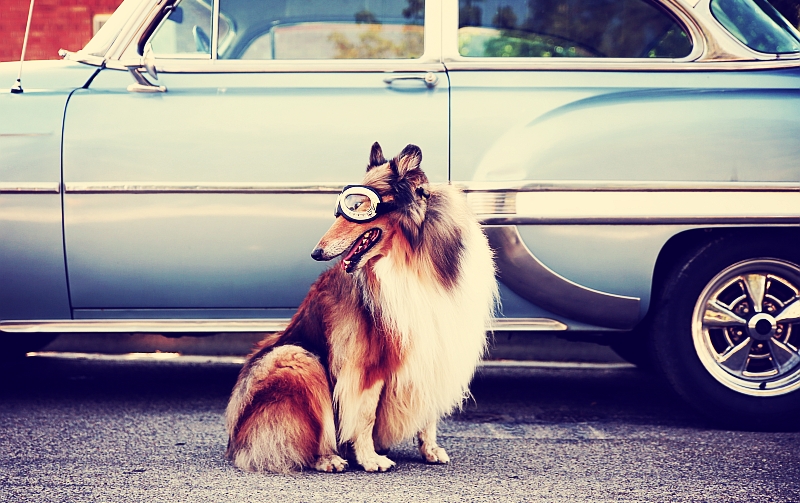A dog that like to chase cars can be a hazard to itself and others on the road.
In many dogs, chasing and/or herding is a natural inclination, and a moving car presents the perfect target for them to exercise the instincts for which they were bred. Some dogs have such a high desire to chase cars that they will do so even if there is a car passing by at quite a distance away; they’ll even lie in wait to chase passing cars.
Due to the danger it poses to the dog, and others on the road, it is critical that such behavior be discouraged before it is learned, and stopped if it has already been learned. Chasing cars, or any moving target, is a fun pastime for dogs. Getting them to not get started with this habit depends on making sure that there is something else equally fun for them to do.
Preventing the Development of a Car-Chasing Habit
Depending on the breed of the dog, the urge to chase can vary, and if your dog is a working or sporting breed, then it is very likely that it will give chase if it sees a moving target (e.g. a car). In such cases it is important to keep a close eye on your dog when there is the potential of passing cars, so that you can prevent the habit from forming even before it starts. This is true for all breeds, but it is doubly important for dog breeds such as border collies, which were bred for herding live stock.
If you know that you and your dog will be in an environment that may have moving cars, it is important to have a plan ahead of time. The goal is to get your dog’s attention with something exciting (other than a car) even at the hint of an impending chase. If you can catch the behavior before it occurs, and engage your dog using a toy, a treat, or anything other than the car, then you can gradually train your dog to not develop that undesirable affinity.
Training Away a Car-Chasing Habit that Has Already Developed
The first step in training your dog to stop giving chase to moving cars is to determine at what distance the behavior is triggered (i.e. when the cars is close by, several feet away, or passing by at a fair distance). Pay attention to when the behavior manifests itself, and determine the distance at which the dog becomes aroused by the moving car. Once you have determined that distance, then you can begin the training by keeping your dog at a point beyond this imaginary line while you are working on extinguishing the behavior.
Training an Alternative Behavior
This training has to begin somewhere away from any distractions. In your home or back yard, begin by training him to respond to an audible signal, such as a tap of your hand on your leg, or a short whistle, or a smack of the tongue. Once you present the signal, every time he responds by making eye contact with you right after the signal is presented, then reward him with a treat. Once his response becomes consistent, introduce motion into the activity (e.g. walk around while doing the exercise). When consistency while in motion becomes apparent, then you can move the exercise to a low-distraction area, and continue escalating the level of distractions until your dog no longer has the uncontrollable urge to chase cars.
The ultimate test is when you can introduce your dog to a real-world situation with cars passing by at a distance, and gradually reduce the distance until such time when your dog doesn’t chase cars passing close by.

